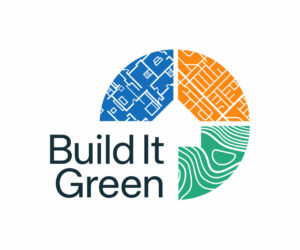We know we face multiple crises – climate change creating extreme weather patterns, depleting natural resources, social injustice and inequity, and to top it all off, a significant housing shortage. We also know the built environment plays an important role and is impacted by all of these crises. Given what is at stake for our communities and our planet, we believe we need to work creatively and collectively to make real, long-term, effective change for the health, wellness, and vitality of individuals, communities and bioregions.
This seven-part series brings together leaders and stakeholders to explore the innovations, tensions and opportunities that exist.
within the building industry to help address these challenges, using small footprint construction infill developments, known as the Accessory Dwelling Unit (ADU).
Using a systems thinking approach, each session is based on one of the five capitals: built, financial, ecological, social, and human. Through these conversations, we explore key questions with our community of what we individually and collectively might be able to do using these more flexible building types, and co-create ideas of the potential end-state we can achieve to make more vibrant and healthy communities through working together.
As you might have heard, California’s residential housing market has a new legal entrant: the Accessory Dwelling Unit or ADU, also known as an in-law unit, granny flat, casita, or garage conversion.
California legislation had slowly been eliminating the barriers to these buildings, but on January 1st, 2020 the state issued a large package of legislation that removed almost all of the land use and zoning restrictions. This required local jurisdictions to quickly familiarize and translate these new standards to their local ordinances and builders to learn new techniques and codes. It created opportunities for new types of construction, technology, and companies and new opportunities for homeowners and advocates.
We’re still very much in the early stages of realizing the potential of these building types, and the combination of
innovation, tensions, and potential of ADUs has made them a perfect starting point for Build it Green’s New Initiative programming. This series will explore what’s currently happening in the ADU space and how we might begin to transform our communities, and even building culture, from this foundation.
Our first session—the Open House—sets the stage for the forums to come, and offers a wide-ranging overview of the history of legislation in California, current opportunities and challenges, emerging best practices for cities, and a glimpse of what we might be able to build together, in our backyards, neighborhoods and even bioregions.
Darin works to promote safe, healthy, affordable and stable housing in Oakland and recognizes ADUs as part of the solution.
The way we think about ADUs in Oakland is that they’re no longer just buildings and housing units, but they also are now a way to address inequality, promote community stabilization and advance racial justice.
– Darin Ranelletti
Denise advocates for small homes – ADUs, cottage clusters, and duplexes – to help improve housing choice and opportunity throughout California
Bill works to lift green building into full integration and evolution with living systems to realize exponential value and potential.
“The health of our home is a unifying concept. If we could align around the health of our homes, building collaboratively, functioning as a building culture, we can begin to have massive change.”
– Bill Reed
Using technology, new supply chains, and emerging job opportunities to meet today’s housing needs.



Alex Coba
Communication Associate
As a proud California native from Stockton, Alex brings a wealth of experience and a versatile skill set. He has a solid communication background with a Bachelor of Arts in Journalism and Public Relations from California State University, Chico. Alex is adept at strategic communications and media relations, with experience gathering and sharing stories from his local communities that uplift the unique spirit and values of those places. He is excited to join Build It Green, where he can apply his talents to further BIG’s mission to help communities across California thrive